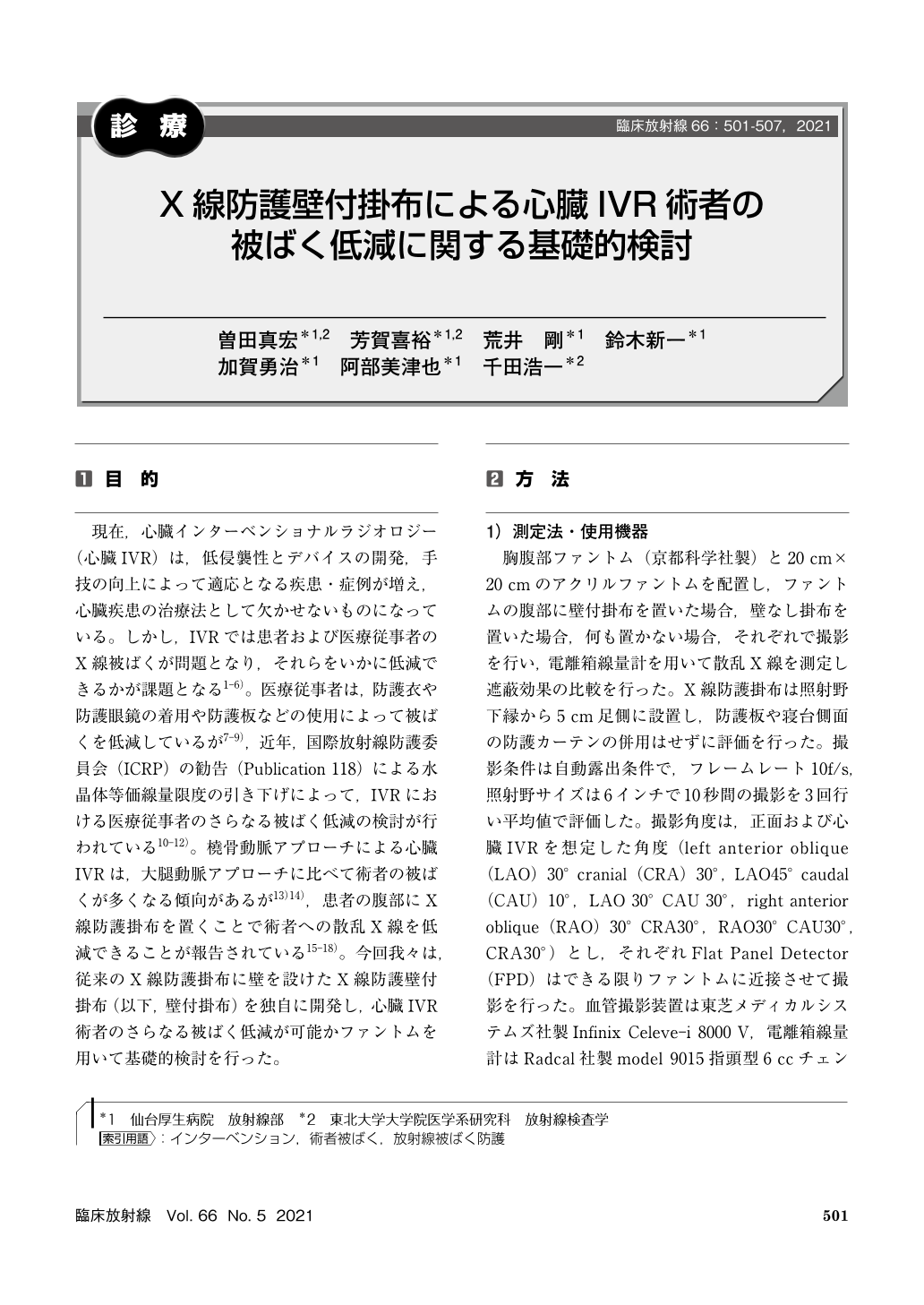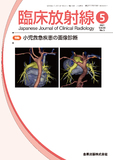Japanese
English
- 有料閲覧
- Abstract 文献概要
- 1ページ目 Look Inside
- 参考文献 Reference
現在,心臓インターベンショナルラジオロジー(心臓IVR)は,低侵襲性とデバイスの開発,手技の向上によって適応となる疾患・症例が増え,心臓疾患の治療法として欠かせないものになっている。しかし,IVRでは患者および医療従事者のX線被ばくが問題となり,それらをいかに低減できるかが課題となる1-6)。医療従事者は,防護衣や防護眼鏡の着用や防護板などの使用によって被ばくを低減しているが7-9),近年,国際放射線防護委員会(ICRP)の勧告(Publication 118)による水晶体等価線量限度の引き下げによって,IVRにおける医療従事者のさらなる被ばく低減の検討が行われている10-12)。橈骨動脈アプローチによる心臓IVRは,大腿動脈アプローチに比べて術者の被ばくが多くなる傾向があるが13)14),患者の腹部にX線防護掛布を置くことで術者への散乱X線を低減できることが報告されている15-18)。今回我々は,従来のX線防護掛布に壁を設けたX線防護壁付掛布(以下,壁付掛布)を独自に開発し,心臓IVR術者のさらなる被ばく低減が可能かファントムを用いて基礎的検討を行った。
Trans radial access for cardiac catheterization is associated with reduced complications and improved patient comfort. Pelvic lead shielding of the patient has been reported to reduce operator radiation exposure. We tested the hypothesis that the originally developed L-shaped lead drape would reduce operator exposure using the human phantom. Scatter radiation was measured at the operator’s position with an ionization chamber survey meter, with and without the L-shaped lead drape. At the operator’s standing position, scatter radiation was reduced by up to 87%, as compared with that without. Similarly, scatter radiation at the operator’s hand position was reduced by up to 92%. The use of the L-shaped lead drape during radial approach reduced the operator exposure at multiple measurement sites.

Copyright © 2021, KANEHARA SHUPPAN Co.LTD. All rights reserved.


